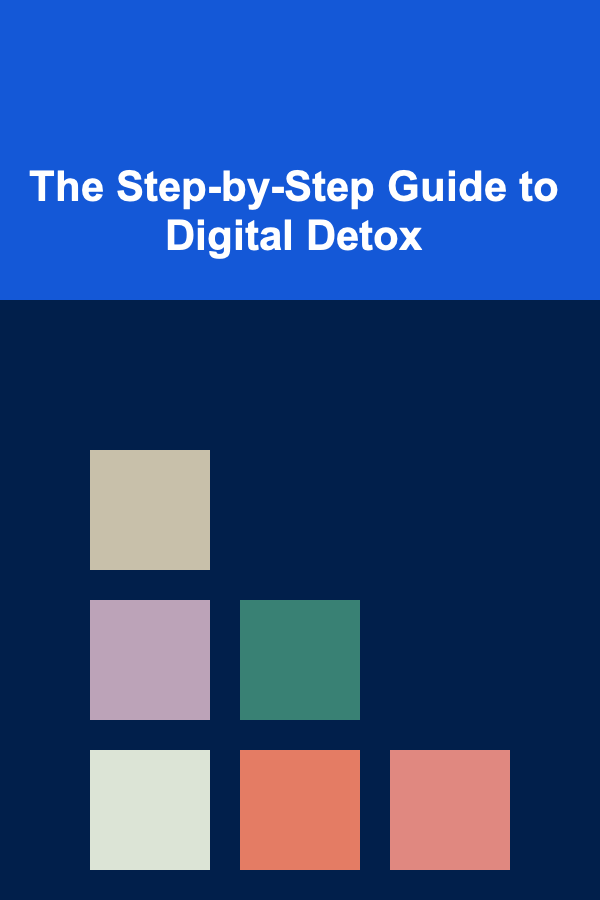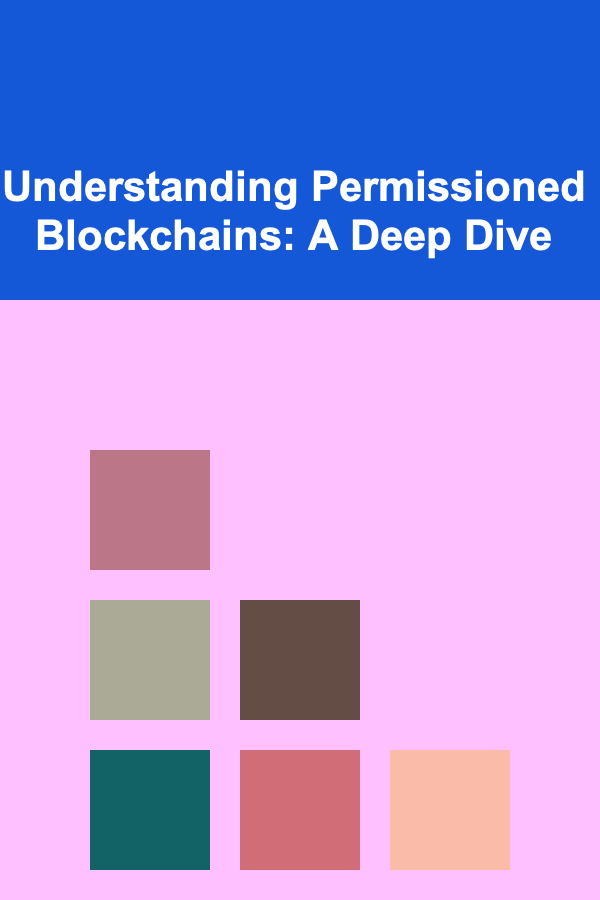
The Step-by-Step Guide to Digital Detox
ebook include PDF & Audio bundle (Micro Guide)
$12.99$11.99
Limited Time Offer! Order within the next:

In a world where digital devices are deeply integrated into our daily lives, it's easy to get overwhelmed by the constant barrage of notifications, messages, and information. Whether it's for work, socializing, or entertainment, screens have become essential tools. But there's a growing recognition of the need to disconnect, reduce screen time, and reconnect with the real world. This is where the concept of a digital detox comes into play.
A digital detox involves a period of time where an individual abstains from using electronic devices like smartphones, computers, and televisions. It's an intentional break to recharge mentally, emotionally, and physically by reducing digital distractions. If done correctly, a digital detox can help restore focus, reduce stress, and improve well-being.
This guide will walk you through a comprehensive approach to taking a digital detox, exploring why it's important, the steps involved, and the lasting benefits it can bring.
Why Digital Detox is Important
1. Reduced Mental Fatigue
The constant exposure to screens, notifications, and information overload can lead to mental exhaustion. Your brain is bombarded with stimuli from various sources, which can prevent you from focusing deeply on any one thing. A digital detox helps your mind relax and reset, allowing you to focus better when you return to your devices.
2. Improved Sleep
Screen time, especially before bedtime, can interfere with sleep patterns. The blue light emitted from devices suppresses the production of melatonin, a hormone responsible for sleep regulation. A digital detox can lead to better sleep quality, allowing you to fall asleep faster and experience more restful sleep.
3. Better Physical Health
Sitting in front of a screen for long periods contributes to a sedentary lifestyle, which can lead to a variety of health issues like eye strain, poor posture, and weight gain. Taking a break from screens encourages you to engage in physical activities, such as walking, exercising, or even taking up new hobbies.
4. Increased Productivity and Focus
Constant digital interruptions can hinder productivity by diverting your attention. The dopamine-driven habit of checking your phone or email every few minutes makes it difficult to stay focused. A digital detox allows you to regain your focus and be more present in your tasks.
5. Improved Relationships
Digital devices, while facilitating communication, can also create barriers in face-to-face interactions. Spending too much time on your phone or computer can detract from the quality time you spend with family and friends. A digital detox allows you to reconnect with people in a more meaningful and intentional way.
Step 1: Set Clear Intentions
Before embarking on a digital detox, it's important to have a clear understanding of why you are doing it and what you hope to achieve. The first step is to set your intentions.
Define Your Goals
Do you want to reduce stress, improve productivity, sleep better, or spend more quality time with loved ones? By identifying your goals, you can tailor the detox to meet your specific needs.
- Stress Reduction: If your goal is to alleviate stress, aim to reduce the time spent on social media and work-related emails.
- Improved Sleep: If you struggle with sleep, setting boundaries around screen time before bed can be helpful.
- Increased Focus: If distractions are a concern, commit to eliminating or limiting non-essential digital activities.
- Enhanced Relationships: If you feel disconnected from others, focus on spending time offline with family or friends.
Understand the Digital Tools You're Using
Take stock of the devices and platforms that consume the most of your time. Is it your smartphone? Social media? Streaming services? Understanding where your time is going will help you better manage your detox.
Step 2: Determine the Duration
Deciding how long you will detox from digital devices is a key part of your plan. The duration of the detox can vary depending on your goals and lifestyle. You can choose to do:
- A Full Day Detox: A one-day break from all digital devices can be a great starting point for beginners.
- A Weekend Detox: Disconnecting over the weekend allows for a more extended break, which may help you see deeper results.
- A Week-Long Detox: For a more comprehensive reset, a week-long detox might be needed. This is ideal for those looking to make significant lifestyle changes.
- Ongoing Detox: Some individuals prefer to adopt a long-term approach, making digital detox a regular part of their routine by designating certain days or hours as screen-free time.
Consider Gradual Detoxing
If the idea of completely cutting off all digital devices feels overwhelming, start small. Gradually reduce your screen time and set limits on certain devices or activities. For instance, start by eliminating social media use for a few hours each day and progressively extend it.
Step 3: Identify Triggers and Set Boundaries
During your detox, it's crucial to identify the triggers that lead you to check your devices. Is it boredom, habit, or anxiety? Understanding these triggers will help you better manage your time offline.
Set Specific Boundaries
To help with self-regulation, establish boundaries around your screen time. Consider the following:
- No Screen Time During Meals: Make mealtimes a tech-free zone to encourage more mindful eating and bonding with family members.
- Set Screen-Free Zones: Designate areas in your home, such as the bedroom or living room, as screen-free zones to encourage relaxation and face-to-face communication.
- Limit Social Media Time: Use apps that track screen time and set limits for how long you spend on social media platforms each day.
Inform Others
If your detox affects your work or social interactions, it's a good idea to inform others about your decision. Let your colleagues, friends, and family know that you'll be reducing your digital presence and set expectations for response times.
Step 4: Replace Digital Activities with Offline Alternatives
A digital detox is not just about removing digital devices; it's also about filling that time with meaningful offline activities. By replacing screen time with healthier alternatives, you can make the detox more enjoyable and rewarding.
Engage in Physical Activities
Use the extra time to engage in physical activities that improve your health, such as:
- Exercise: Take a walk, go for a run, or try yoga. Physical movement helps clear your mind and boost energy levels.
- Outdoor Activities: Explore nature by going hiking, camping, or simply spending time outside. Fresh air and natural surroundings can help reduce stress and increase mindfulness.
Cultivate Hobbies and Creativity
A digital detox is a great time to rediscover hobbies and creative outlets. Consider activities like:
- Reading: Pick up a book you've been meaning to read but never had the time for.
- Writing: Start a journal or creative writing project to express your thoughts and ideas.
- Arts and Crafts: Try drawing, painting, knitting, or any other craft that allows you to express creativity.
Strengthen Social Connections
Use the time to focus on real-world relationships. You can:
- Spend time with family and friends: Plan in-person activities like playing board games, cooking together, or having meaningful conversations.
- Join a Club or Group: Consider joining a local book club, hobby group, or fitness class to connect with others.
Practice Mindfulness and Meditation
In the absence of constant digital noise, it's a perfect opportunity to practice mindfulness. Meditation and mindfulness practices can help you become more aware of your thoughts and emotions, promoting inner peace and focus.
Step 5: Reflect on Your Experience
Once you've completed your digital detox, take time to reflect on the experience. Ask yourself:
- How did I feel during the detox? Did you notice any changes in your mood, energy levels, or overall well-being?
- What did I learn about my digital habits? Were there any unexpected realizations about how much time you spend on devices or how they affect your life?
- How can I maintain balance moving forward? Consider implementing strategies for long-term digital well-being, such as creating tech-free zones or setting boundaries for screen time.
Step 6: Establish Healthy Digital Habits
A successful digital detox doesn't mean completely abandoning technology. Instead, it's about creating a healthier relationship with digital tools. Moving forward, consider adopting some of these strategies:
- Schedule Regular Detoxes: Make digital detoxes a regular part of your routine. For example, commit to a digital detox every weekend or one day per week.
- Create Tech-Free Times: Designate certain hours of the day, such as before bedtime or during meals, as screen-free times to promote mindfulness and relaxation.
- Set Limits: Use tools like screen time trackers or app limiters to reduce the amount of time spent on devices.
Conclusion
A digital detox is a powerful way to regain control over your digital life, reduce stress, and improve your mental and physical health. By following the steps outlined in this guide, you can embark on a journey of self-discovery and mindfulness, reconnecting with yourself and the world around you.

How to Create a Sports Equipment Rotation System
Read More
How to Handle Fleas and Ticks in Your Home
Read More
How to Maintain Your Home's Siding and Exterior Walls
Read More
How to Start Investing with Little Money and Grow Your Wealth
Read More
Understanding Permissioned Blockchains: A Deep Dive
Read More
Mastering Art Deco Interior Design: A Comprehensive Guide
Read MoreOther Products

How to Create a Sports Equipment Rotation System
Read More
How to Handle Fleas and Ticks in Your Home
Read More
How to Maintain Your Home's Siding and Exterior Walls
Read More
How to Start Investing with Little Money and Grow Your Wealth
Read More
Understanding Permissioned Blockchains: A Deep Dive
Read More